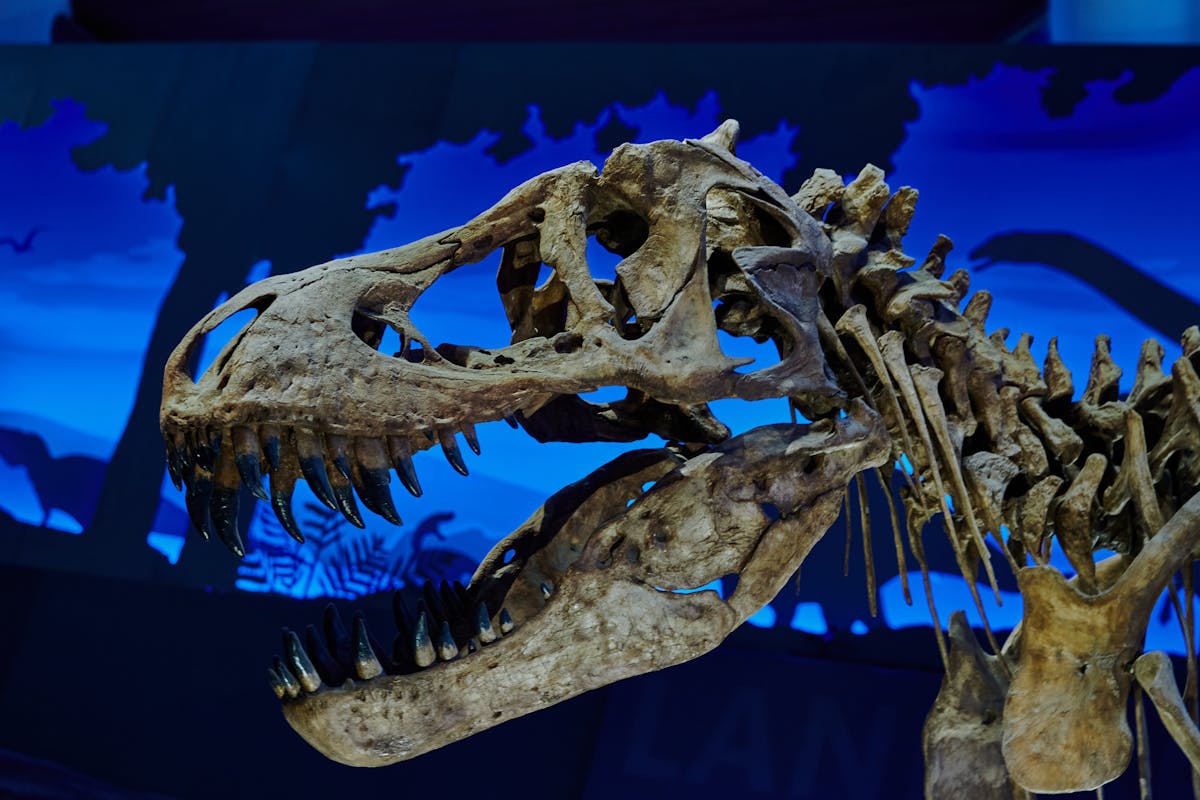Discovering dinosaur skulls offers an incredible glimpse into the prehistoric world, unraveling the mysteries of creatures that once ruled the Earth. These ancient fossils provide scientists with valuable insights into the anatomy, behavior, and evolution of dinosaurs. From the T-Rex to the Triceratops, every skull tells a unique story about the history of life on our planet. In this article, we will explore the significance of dinosaur skulls, their discovery, and the importance they hold in paleontological research.
The fascination with dinosaur skulls has captivated scientists and enthusiasts alike for generations. These fossils are not just remnants of ancient creatures but also serve as vital clues in understanding how dinosaurs lived, interacted, and eventually went extinct. By studying these skulls, researchers can piece together the puzzle of Earth's history, offering a clearer picture of the world millions of years ago.
As we delve deeper into the world of dinosaur skulls, you'll uncover the incredible stories behind some of the most famous discoveries, the technology used to study them, and the ongoing research that continues to expand our knowledge of these magnificent creatures. Whether you're a paleontology enthusiast or simply curious about dinosaurs, this article will take you on an exciting journey through time.
Read also:Stephen Fry The Fascinating Journey Of A Young Talent
Table of Contents
- Introduction to Dinosaur Skulls
- Types of Dinosaur Skulls
- Famous Dinosaur Skulls
- Discovery and Exploration
- Techniques Used in Studying Skulls
- Importance of Skulls in Paleontology
- Evolution and Adaptation
- Threats to Dinosaur Skull Preservation
- Conservation Efforts
- Conclusion and Future Research
Introduction to Dinosaur Skulls
Dinosaur skulls are among the most intriguing fossils discovered by paleontologists. These fossils provide critical insights into the physical characteristics and lifestyles of dinosaurs. Each skull offers a window into the past, revealing information about the diet, sensory capabilities, and social behaviors of these ancient creatures.
Why Are Dinosaur Skulls Important?
Dinosaur skulls are essential for understanding the biology of dinosaurs. They help scientists identify species, study evolutionary relationships, and reconstruct the appearance of dinosaurs. By analyzing the structure of the skull, researchers can determine whether a dinosaur was a carnivore, herbivore, or omnivore, based on the shape and size of its teeth and jaws.
Types of Dinosaur Skulls
Dinosaur skulls come in various shapes and sizes, reflecting the diversity of species that existed during the Mesozoic Era. Each type of skull tells a unique story about the dinosaur it belonged to.
Theropod Skulls
Theropod skulls, such as those of the Tyrannosaurus rex, are characterized by their powerful jaws and sharp teeth, adapted for a carnivorous lifestyle. These skulls are often large and robust, reflecting the predatory nature of theropods.
Sauropod Skulls
Sauropod skulls, like those of the Brachiosaurus, are typically smaller in proportion to their massive bodies. These herbivorous dinosaurs had specialized teeth for grinding plant material, allowing them to process large quantities of vegetation.
Famous Dinosaur Skulls
Some of the most famous dinosaur skulls have become icons in the world of paleontology. These discoveries have significantly contributed to our understanding of dinosaurs and their ecosystems.
Read also:Bob Gervais A Comprehensive Look At His Life Career And Impact
Tyrannosaurus Rex Skull
The Tyrannosaurus rex skull is one of the most well-known fossils in the world. Discovered in 1902 by Barnum Brown, this skull has provided invaluable insights into the anatomy and hunting behavior of the "tyrant lizard king." Studies have shown that T-Rex had a powerful bite force, capable of crushing bones with ease.
Discovery and Exploration
The discovery of dinosaur skulls has been a thrilling journey for paleontologists. From the Badlands of North America to the Gobi Desert in Mongolia, these fossils have been found in various locations around the world.
Key Discovery Sites
- Montana's Hell Creek Formation: A rich source of T-Rex fossils
- Utah's Morrison Formation: Home to numerous sauropod skulls
- Mongolia's Gobi Desert: Famous for the discovery of Velociraptor skulls
Techniques Used in Studying Skulls
Modern technology has revolutionized the study of dinosaur skulls. Paleontologists now use advanced techniques such as CT scans, 3D modeling, and chemical analysis to gain deeper insights into these ancient fossils.
CT Scanning
Computed tomography (CT) scanning allows scientists to examine the internal structure of dinosaur skulls without damaging them. This non-invasive technique provides detailed images of the brain cavity, sinuses, and other internal features, helping researchers understand the neurological capabilities of dinosaurs.
Importance of Skulls in Paleontology
Dinosaur skulls play a crucial role in paleontological research. They provide evidence for the classification of species, the study of evolutionary relationships, and the reconstruction of ancient ecosystems. By analyzing these fossils, scientists can piece together the complex history of life on Earth.
Reconstructing Ancient Ecosystems
Skulls help paleontologists reconstruct the environments in which dinosaurs lived. By studying the teeth and jaws of herbivorous dinosaurs, researchers can infer the types of plants that were available in their habitats. Similarly, the presence of carnivorous dinosaur skulls can indicate the predator-prey dynamics of ancient ecosystems.
Evolution and Adaptation
The evolution of dinosaur skulls reflects the incredible adaptability of these creatures. Over millions of years, dinosaurs developed specialized features that allowed them to thrive in diverse environments.
Adaptations for Feeding
Herbivorous dinosaurs like the Triceratops evolved complex dental structures to efficiently process plant material. Carnivorous dinosaurs, on the other hand, developed sharp, serrated teeth for tearing flesh. These adaptations highlight the diverse feeding strategies employed by dinosaurs.
Threats to Dinosaur Skull Preservation
Despite their importance, dinosaur skulls face numerous threats to their preservation. Natural processes such as erosion and weathering can damage these fossils, while human activities like illegal fossil trading pose additional risks.
Illegal Fossil Trading
Illegal fossil trading is a significant threat to the preservation of dinosaur skulls. Unscrupulous collectors often remove fossils from their original sites, disrupting the scientific context and reducing their value for research. Efforts are underway to combat this issue through stricter regulations and increased public awareness.
Conservation Efforts
Conservation efforts are vital for protecting dinosaur skulls and ensuring their availability for future generations. Museums, research institutions, and governments are working together to preserve these fossils and promote their study.
Public Awareness Campaigns
Public awareness campaigns play a crucial role in educating people about the importance of dinosaur skulls and the need for their preservation. By highlighting the scientific value of these fossils, these campaigns encourage responsible fossil collecting and discourage illegal activities.
Conclusion and Future Research
Dinosaur skulls continue to captivate scientists and the public alike, offering a fascinating glimpse into the prehistoric world. Through ongoing research and the use of advanced technologies, we can deepen our understanding of these incredible creatures and their role in Earth's history.
As we conclude this journey through the world of dinosaur skulls, we invite you to explore further by visiting museums, reading scientific publications, or even participating in fossil digs. Your curiosity and passion for paleontology can help preserve these ancient treasures for future generations.
Call to Action: Share this article with your friends and family to spread awareness about the importance of dinosaur skulls. Leave a comment below with your thoughts or questions, and don't forget to check out our other articles on prehistoric life!


